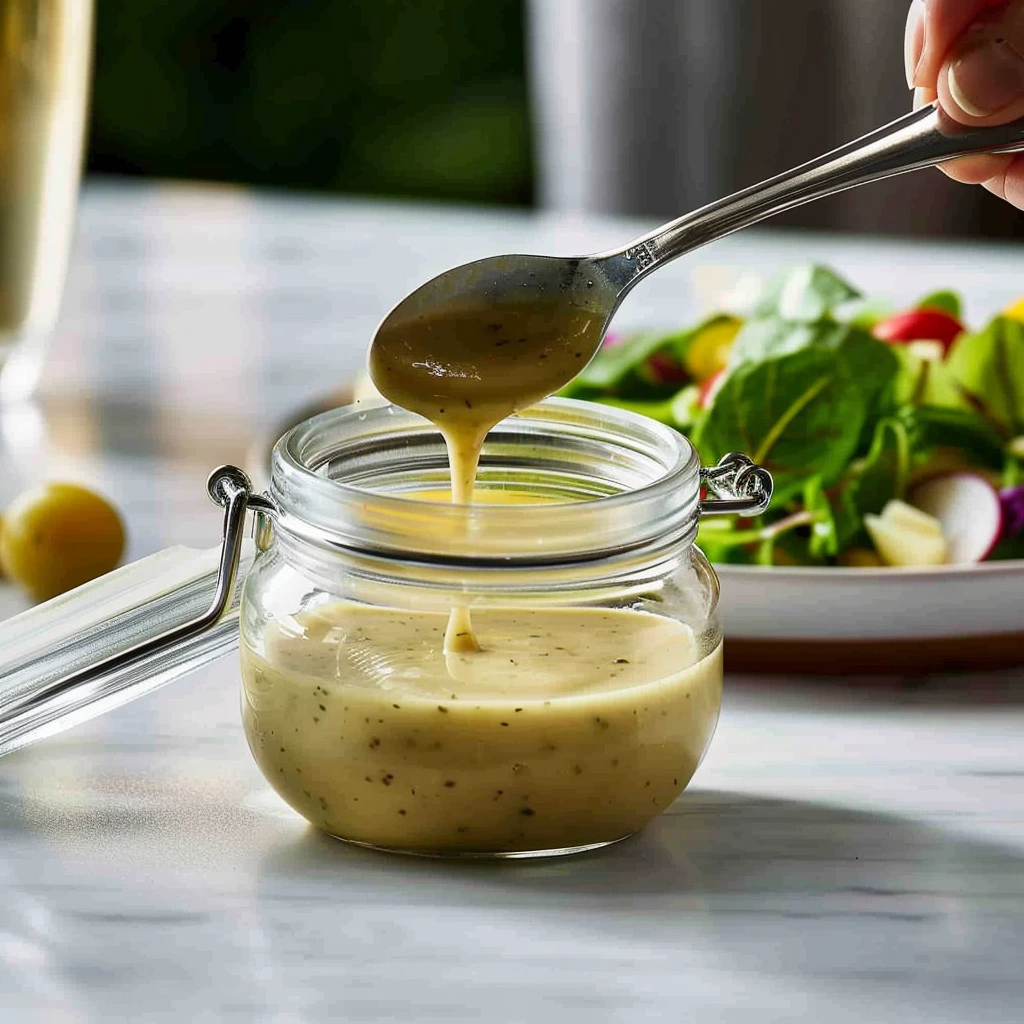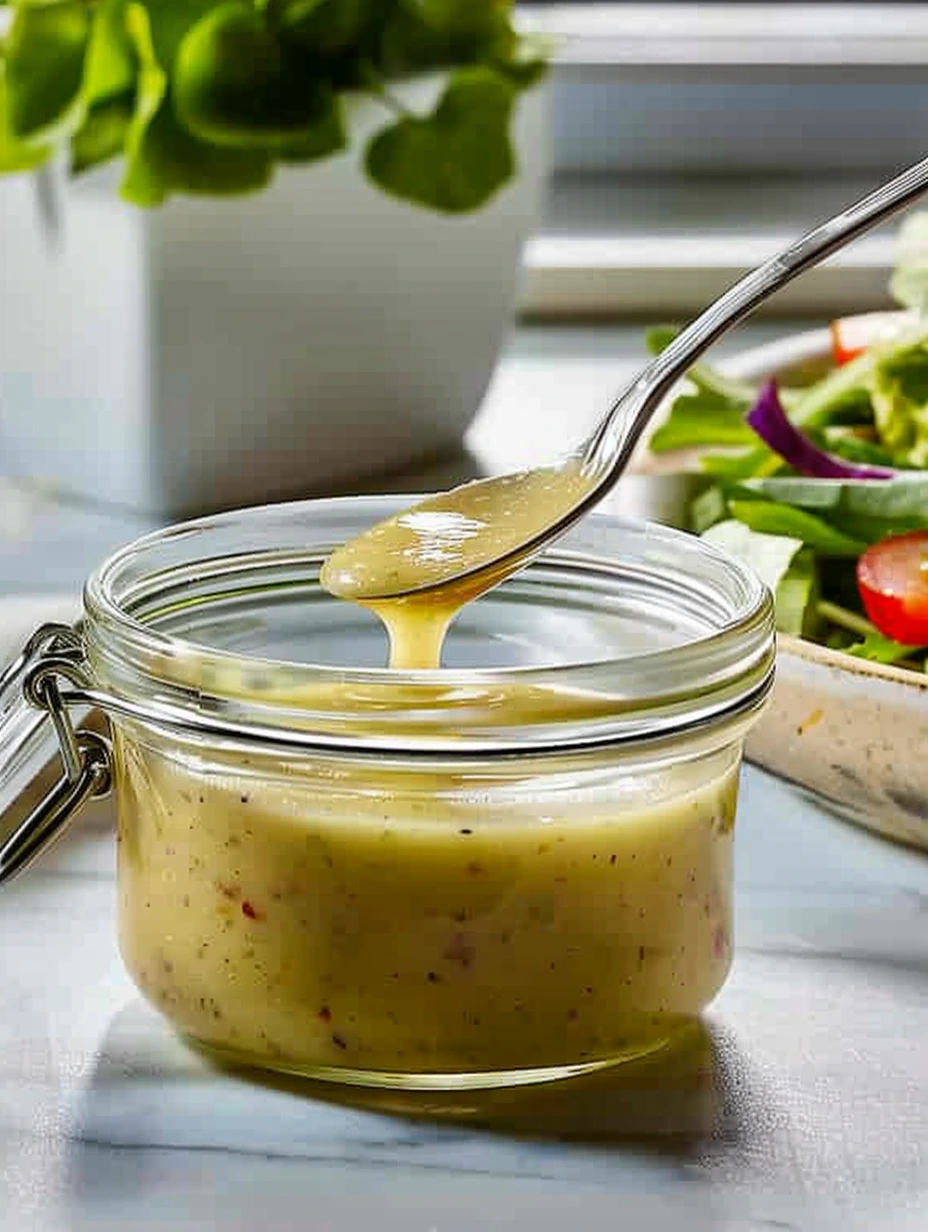 Pin it
Pin it
These homemade dressings can turn any ordinary salad into a flavorful dish that feels like it came from a fancy restaurant. Skip the store-bought versions full of additives and see how a few simple ingredients can make amazing flavor enhancers for your greens.
I started making my own dressings about ten years ago and haven't bought a bottle from the store since. Whenever friends come over for dinner, they always ask me for my secret after tasting my salads.
Ingredients
Classic Dressing
- 3 tablespoons extra virgin olive oil: gives a fruity taste and packs health benefits
- 1 tablespoon red wine vinegar: adds just the right amount of tang
- 1 teaspoon Dijon mustard: works as a natural thickener for a smooth texture
- A bit of salt and fresh ground pepper: brings out all the flavors
Honey Mustard Dressing
- 3 tablespoons good quality olive oil: cold-pressed works best
- 1 tablespoon apple cider vinegar: known to help with digestion
- 1 teaspoon strong mustard: perfectly balances the sweetness from honey
- 1 teaspoon honey: try to use local honey for better flavor
- Salt and pepper: to round out the taste
Lemon Herb Dressing
- 3 tablespoons olive oil: fruity type works well with the citrus notes
- 1 tablespoon fresh lemon juice: tastes so much better than bottled stuff
- 1 tablespoon finely chopped parsley or chives: for an unbeatable freshness
- 1 teaspoon mild mustard: binds everything without taking over
- Salt and pepper: for just the right seasoning
Asian Dressing
- 2 tablespoons toasted sesame oil: gives that rich, distinctive flavor
- 1 tablespoon soy sauce: Japanese varieties tend to be less salty and more nuanced
- 1 tablespoon rice vinegar: mild with a slight sweetness
- 1 teaspoon honey or maple syrup: creates a nice sweet-salty balance
- 1 teaspoon sesame seeds: adds texture and a nutty taste
Creamy Yogurt Dressing
- 3 tablespoons plain Greek yogurt: thicker varieties work better
- 1 tablespoon fresh lemon juice or apple cider vinegar: provides the needed acidity
- 1 teaspoon mustard: brings together and enhances all other ingredients
- 1 tablespoon olive oil: adds richness and improves texture
- Salt, pepper and fresh herbs: for complete flavoring
Step by Step Instructions
Making the Classic Dressing
- First mix:
- Grab a wide bowl and start by mixing the mustard and vinegar together. This first step matters a lot because it lets the mustard work its magic as an emulsifier. Whisk hard for about half a minute until you see everything blending smoothly.
- Getting the perfect blend:
- Now slowly drizzle in your olive oil while you keep whisking. The trick is to start with just a few drops, then gradually pour more while never stopping your whisking motion. This way, you'll get a stable mix that won't separate later. Keep going until all the oil is mixed in and you've got something slightly thick and shiny.
- Final touch:
- Add salt and freshly ground pepper to taste. Try it and adjust if needed. A well-balanced dressing usually has a 3-to-1 ratio of oil to vinegar, but you can change this depending on what you like.
Making the Honey Dressing
- First mix:
- Start by thoroughly combining the mustard, honey, and vinegar in a bowl. Honey mixes better if you slightly warm the vinegar first, if you have time. Stir vigorously until everything blends perfectly with no honey lumps left.
- Adding the oil:
- Pour the olive oil in a very thin stream while continuously whisking. This step needs patience to get the perfect blend. The dressing should gradually thicken and become glossy. If it seems too thick, you can add a few drops of water.
- Custom seasoning:
- Finish by adding salt and pepper to your liking. This balanced dressing with its mix of sweetness and tanginess works really well with salads that have dried fruits or cheese in them.
I got hooked on making dressings during a stay at my grandma's house in southern France. She only used stuff from her garden and taught me that good oil and vinegar make all the difference. Her little trick was adding a tiny bit of honey even to basic dressings to cut the acidity without making it taste sweet.
Storage and Shelf Life
Homemade dressings stay good in the fridge for 3-7 days when kept in a sealed glass jar, depending on what's in them. Ones with yogurt or fresh herbs won't last as long as basic recipes. Always pull your dressing out of the fridge about 15 minutes before you need it since olive oil gets solid when cold and needs to warm up a bit.
Don't worry if your dressing separates during storage. Just give it a good shake or quick whisk to bring it back together. If your dressing seems too thick after a few days, just add a few drops of warm water and mix it up.
Creative Twists
The best thing about homemade dressings is how easily you can change them up. For a fancier version, swap some of the olive oil with walnut, hazelnut, or avocado oil. Throw in some finely chopped shallots or crushed garlic for extra flavor depth.
Fresh herbs can instantly turn a basic dressing into something special. Try basil, mint, tarragon, or cilantro. Spices like cumin, smoked paprika, or sumac can add fascinating exotic notes.
Want a creamier version without dairy? Mix in half a mashed avocado or a teaspoon of tahini. Citrus fruits like grapefruit or blood orange can partly or fully replace vinegar for amazing freshness.
 Pin it
Pin it
Pairing Foods with Dressings
Each dressing has its own perfect matches. The classic dressing works wonders with delicate greens like lettuce, mache, or arugula without overpowering their natural taste. It's also great with steamed veggies like green beans or asparagus.
The honey dressing goes amazingly well with fall and winter salads containing apples, walnuts, and goat cheese. Its sweet-savory balance pairs perfectly with bitter veggies like endives or radicchio.
The Asian dressing can quickly turn plain raw veggies into an exotic salad. Use it to flavor cold noodles, thinly sliced red cabbage, grated carrots, and throw in some crushed peanuts for a complete tasty meal.
Pro Tips
Always mix your dressing in a container bigger than you think you need to make blending easier
Always taste before serving and adjust as needed—a tiny pinch of sugar can help if the dressing is too tangy
Let herb dressings sit for a few hours before using so the flavors can fully develop
Frequently Asked Questions
- → How can I get a smooth texture for my dressings?
Pour the oil in slowly while whisking hard to mix everything together well.
- → How long can I keep homemade dressing?
Homemade dressings stay good for 3 to 5 days in the fridge when stored in an airtight container.
- → Can I swap ingredients if I'm missing something?
Sure thing, you can use lemon juice instead of wine vinegar, or mild mustard in place of Dijon mustard.
- → How do I change up the flavors in a dressing?
Toss in some spices, fresh herbs, citrus zest, or a bit of honey or maple syrup to make it your own.
- → What foods go well with these dressings?
These dressings work great with green salads, raw veggies, roasted vegetables, fish, avocados or even cold noodles.
